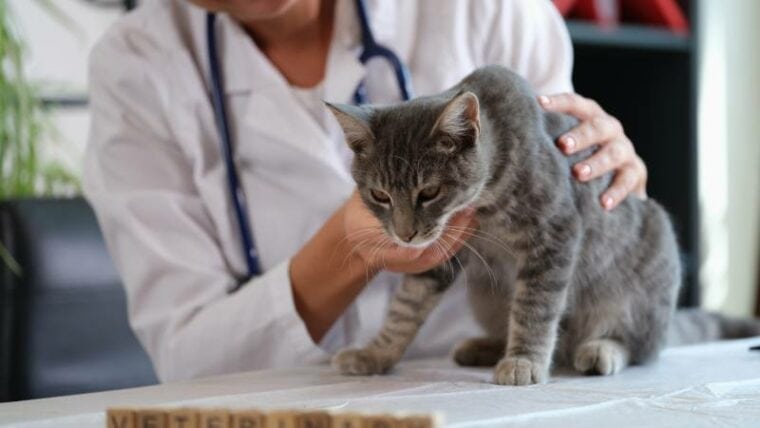
Cardiomyopathy literally means “disease of the heart muscle”. It is the most common form of heart disease in cats, and the most common cause of heart failure.
Whether you’re a curious cat owner or the owner of a cat that has been diagnosed with cardiomyopathy, it’s worth knowing more about the condition. Let’s discuss cardiomyopathy in more detail, including the signs, causes, and treatment.
What Is Cardiomyopathy?
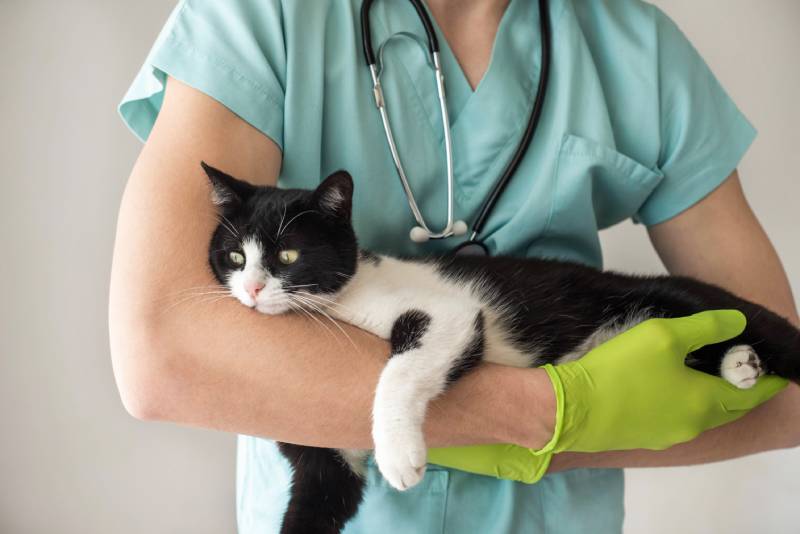
Cardiomyopathy is a disease that affects a cat’s myocardium (heart muscle). In general, the heart muscle either grows too thick, becomes too stiff, or it stretches and becomes too thin, and as a result, cannot pump blood effectively.
Cats with cardiomyopathy are at an increased risk of developing heart failure, blood clots and sudden cardiac death. There are three common forms of cardiomyopathy in cats, including hypertrophic, restrictive, and dilated cardiomyopathy.
Hypertrophic Cardiomyopathy
Hypertrophic cardiomyopathy (HCM) is the most common form of the disease, representing approximately two thirds of the cardiomyopathy cases seen in cats. In HCM, the muscular walls of a cat’s heart thicken. This reduces the volume of blood within the heart and also prevents the heart muscle from relaxing properly between contractions.
Restrictive Cardiomyopathy
Restrictive cardiomyopathy (RCM) is caused by the buildup of scar tissue in the walls of the heart. As a result, the heart muscle becomes rigid and unable to relax and fill with blood.
Dilated Cardiomyopathy
Dilated cardiomyopathy (DCM) is relatively rare in cats. In DCM, the muscle walls become stretched and thin (dilated) and the heart enlarges. The thinner walls are weakened, which makes it difficult for the heart to contract properly and pump blood to the rest of the body.
What Are the Signs of Cardiomyopathy in Cats?
The signs of cardiomyopathy depend on the severity of the disease. In the early stages, a cat with cardiomyopathy may not show any obvious signs of disease. Cats will often decrease their activity levels to those they can cope with. These changes in activity levels are not always obvious and can be hard to pick up on which often makes cardiomyopathy difficult to diagnose until it’s quite advanced.
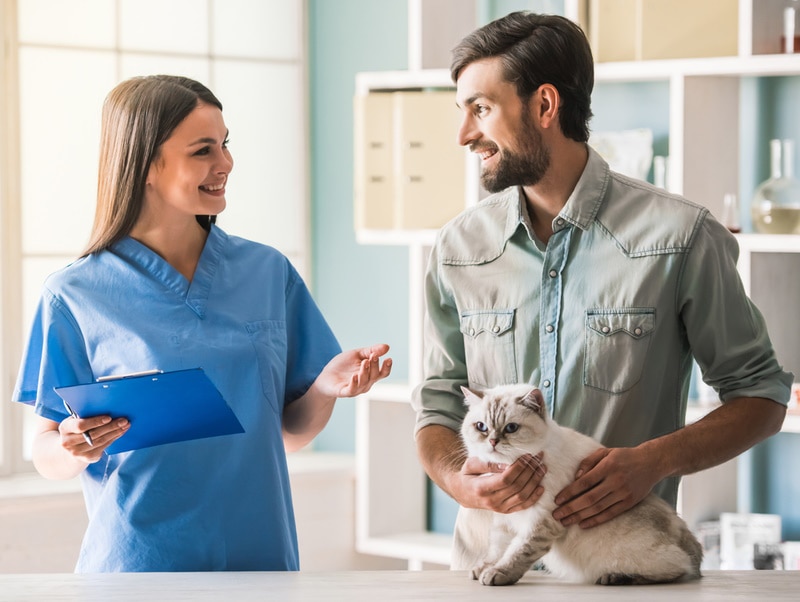
Abnormal Heart Rate
While most cats don’t show obvious signs of heart disease in the early stages, your veterinarian may pick up subtle signs of the disease while listening to your cat’s heart with a stethoscope during a physical exam. These signs include a heart murmur, an abnormal heart rhythm, or an abnormally high or low heart rate. This is why cats should receive a checkup by a veterinarian at least once a year and more frequently if they’re older.
Congestive Heart Failure
If the disease progresses and heart function is significantly impaired, congestive heart failure ensues. Heart failure occurs when the heart muscle doesn’t pump blood as well as it should. When this happens, blood often backs up and fluid builds up in and around the lungs.
In cats, the most common signs of heart failure are difficulty breathing and rapid breathing. Other signs of congestive heart failure include low energy levels, lack of appetite, and a swollen, fluid-filled abdomen (ascites).
Feline Aortic Thromboembolism
Another sign of cardiomyopathy in cats is the sudden onset of paralysis of the back legs due to a blood clot. This is known as Feline Aortic Thromboembolism (FATE).
Feline Aortic Thromboembolism occurs when a blood clot forms within the heart due to abnormal blood flow. The blood clot dislodges, traveling through the bloodstream until it becomes lodged in a blood vessel. This often happens in the aorta, the main artery carrying blood from the heart to the rest of the body. The clot blocks blood flow to the hind limbs, causing sudden paralysis and extreme pain.
What are the Causes of Cardiomyopathy in Cats?
In cats, most cardiomyopathies are primary diseases, meaning that their origins are either genetic or unknown (idiopathic). Some however, are secondary diseases with identifiable causes. These causes include:
Taurine is an essential amino acid for cats. Essential amino acids are a group of amino acids that cannot be synthesized in the body and are thus required to be taken in through diet. Taurine deficiency was once a common cause of dilated cardiomyopathy in cats. However, today, commercially available cat food is supplemented with taurine, so the disease is only seen in cats that are fed an imbalanced diet (e.g., an imbalanced home cooked diet).
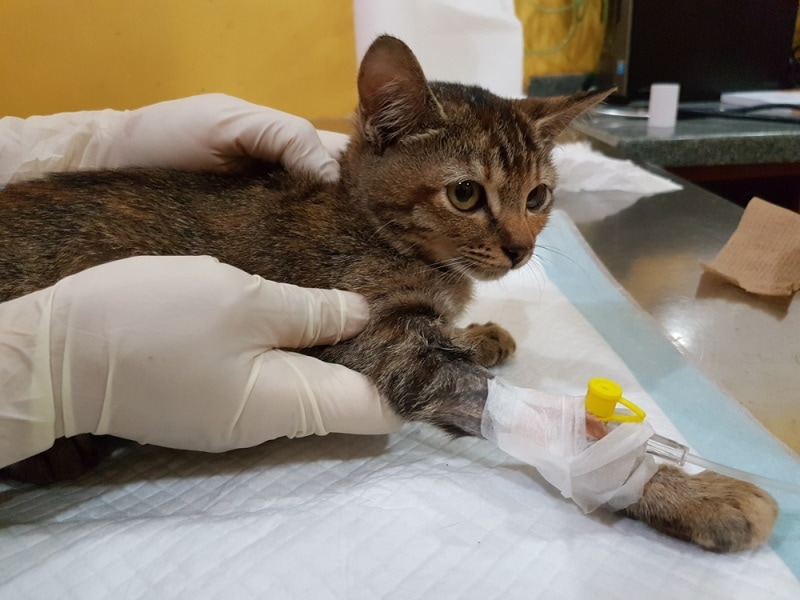
How Is Cardiomyopathy Diagnosed in Cats?
A veterinarian may suspect cardiomyopathy based on the clinical signs that a cat is showing such as a heart murmur, abnormal heart rate or rhythm, breathing difficulties, or hindlimb paralysis.
Various tests are performed to assist in diagnosing cardiomyopathy. These include:
X-rays
X-rays are helpful in evaluating the size and shape of the heart and for detecting pulmonary edema (fluid on the lungs) or pleural effusion (fluid around the lungs). X-rays are sometimes used to help monitor the efficacy of treatment.
Electrocardiogram (ECG)
An ECG is used to check the heart’s rhythm and electrical activity.
Echocardiography
Echocardiography (ultrasound of the heart) is used to visualize the heart’s structure and function, helping to identify any abnormalities in the heart chambers, valves, or muscle thickness. Echocardiography is able to distinguish between the different types of heart disease in cats.
Other Tests
Other tests, such as blood tests or blood pressure monitoring, may be needed to test for underlying diseases.

How Is Cardiomyopathy Treated in Cats?
In cases where the underlying cause of cardiomyopathy is found and treated (such as hyperthyroidism), the changes to the heart will often improve or may even resolve completely.
In cases where cardiomyopathy is a primary disease, or where heart disease persists despite treatment of the underlying disease, medication may be needed.
The treatment may vary according to each individual case but may include:
How Do I Care for a Cat With Cardiomyopathy?
If your cat has been diagnosed with cardiomyopathy, it’s crucial to work with your veterinarian to create a care plan tailored to your cat’s specific needs.
However, here are some general tips:
Understand Your Cat’s Diagnosis and Treatment
Prepare a list of questions for your veterinarian so that you fully understand your cat’s diagnosis, proposed treatment plan, and prognosis. Ensure that you understand how your cat’s condition will be monitored and what improvements you can expect.
If your cat has been prescribed medication, always follow the medication instructions given by your veterinarian. Never change the prescribed dose or stop the medication without speaking to your vet.
If you struggle to administer medication, discuss this with your veterinarian. Your veterinarian may be able to provide tips to help you give the medication or suggest alternative formulations.
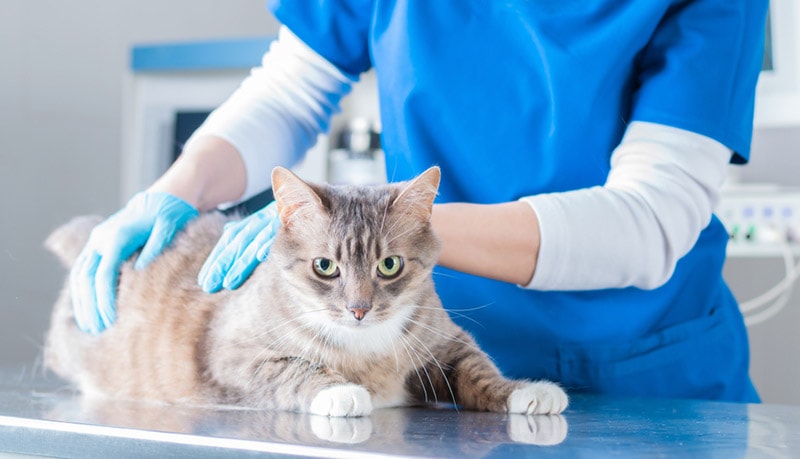
Keep Up With Follow-Up Visits
Be sure to take your cat for follow-up visits as instructed by your veterinarian. Your veterinarian may recommend follow-up tests such as X-rays or echocardiograms. Follow-up visits are important to monitor your cat’s response to treatment, to make medication adjustments, and to monitor your cat’s quality of life.
Monitor Your Cat’s Health
Keep track of your cat’s clinical signs. If you notice any changes in your cat’s breathing, activity levels, or appetite, contact your vet immediately.
Your vet may advise you to monitor your cat’s sleeping respiratory rate. The normal sleeping respiratory rate of cats is less than 30 breaths per minute. An elevated sleeping respiratory rate (more than 30 breaths per minute) may indicate that your cat has developed pulmonary edema (fluid on the lungs) or a pleural effusion (fluid around the lungs) and needs to be seen.
If your cat loses the use of one or both of its hindlimbs or shows signs of pain, contact your veterinarian immediately. This could indicate that your cat has developed a blood clot. Feline Aortic Thromboembolism is a medical emergency and may be life-threatening.
Frequently Asked Questions (FAQs)
Are Certain Breeds of Cats at Risk of Developing Cardiomyopathy?
Hypertrophic cardiomyopathy is the most common form of cardiomyopathy. Although it occurs in all breeds of cats, it is more prevalent in Maine Coon, Ragdoll, British Shorthair, Sphynx, Chartreux and Persian cats.
Do Cats with Cardiomyopathy Need to be Fed a Special Diet?
Cats with cardiomyopathy are sometimes prescribed a low-sodium diet. In the early stages when a heart murmur is detected or before clinical signs are present, it’s unnecessary to feed your cat a low sodium diet.
It is, however, advisable to avoid salty treats or table scraps. If heart disease progresses and the cat goes into congestive heart failure, sodium restriction becomes more important. Your veterinarian will make diet suggestions based on your individual cat’s condition.

Conclusion
While it’s not always possible to prevent cardiomyopathy, the most important thing that you can do to help keep your cat healthy is to schedule regular veterinary check-ups. Young to middle-aged cats should be seen at least once a year, while older cats should be examined more frequently. It’s also important to feed your cat a nutritionally balanced diet and to educate yourself on the signs of heart disease.
See also:
Featured Image Credit: Konstantin Aksenov, Shutterstock







